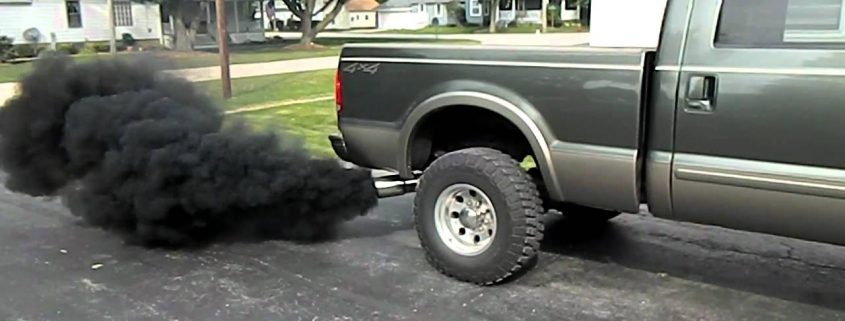IDENTIFY PROBLEMS WITH DIESEL TRUCK EXHAUST SMOKE
Any diesel engines built after 2008 that have exhaust treatment systems, such as a DPF, DOC, or SCR, should never blow smoke while the vehicle is running. Those built before 2008 that do not have such a system should have very little or no smoke at all.
The only time any smoke should be visible from the tailpipe on a newer diesel vehicle is when the temperature is quite cool. This shows up as a white plume and can be seen on any car or truck no matter what type of engine it has. As soon as the engine warms up, this smoke should disappear. If a correctly maintained diesel engine smokes at any other time, it indicates a problem.
Identifying this problem begins by examining the smoke. Different exhaust colours give clues about what type of repairs the diesel fuel injection system will need.
BLACK SMOKE
In most cases, the smoke coming from your vehicle will not be pitch black but instead a dark or dirty gray color. This occurs when unburnt fuel blows out of the combustion chamber and mixes with the normal gasses found in the exhaust. If dark smoke is visible, the car or truck most likely has one of these issues:
• Too much diesel fuel in the combustion chamber
• Fuel entering the combustion chamber too early due to faulty injection pump timing
• Too little air due to a restriction in the intake
This issue relates to the incorrect use of fuel within the fuel injection system. Either excess fuel, low-grade fuel, lack of air, or lack of appropriate time to burn the fuel is the culprit. If black or gray smoke comes out in the exhaust, the vehicle may also be experiencing low fuel economy and lack of power. Fixing this problem may pay for itself with increased miles per gallon.
WHITE SMOKE
If the fuel does not burn at all when going through the combustion chamber, it will mix with the regular exhaust gas and come out as white smoke. As mentioned above, this occurs in cold vehicles because the chamber is not sufficiently hot to burn the fuel. This occurs below 500°F and may be the result of outside temperatures or hauling of light loads.
BLUE SMOKE
Whenever blue smoke emits from the exhaust pipe, it means the vehicle is burning engine oil. Another clue to this problem is excessive oil usage and the need to refill it frequently. Blue smoke can be caused by multiple engine problems.
- Worn out piston rings
- Failure of valve sleeves
- Failure of Turbocharger seals
When any of these smoke situations occur, complete testing of the diesel fuel injection system is warranted. Make sure a minimum of 350 PSI is occurring in the engine so the cylinder can compress and fire properly. If this test succeeds, move on to the turbo intake lines. Older or ill-maintained turbo systems may leak oil internally due to worn out shaft seals. If this is the case, the turbocharger compressor wheel essentially vacuums the oil past the seals and creates blue smoke.
No matter what the color, smoke coming from diesel engines indicates some type of problem that needs to be addressed for proper operation of the vehicle. The ability to identify these problems just by looking at the exhaust smoke can speed up the repair process and get the vehicle back on the road safely and smoke-free.
Want to know more about preventing your diesel vehicle from blowing out coloured smoke? Read our blog on how to reduce exhaust smoke.



